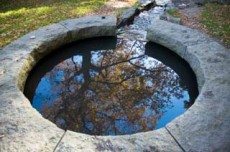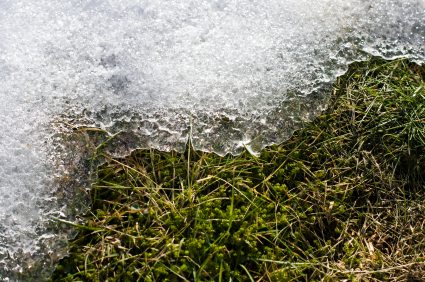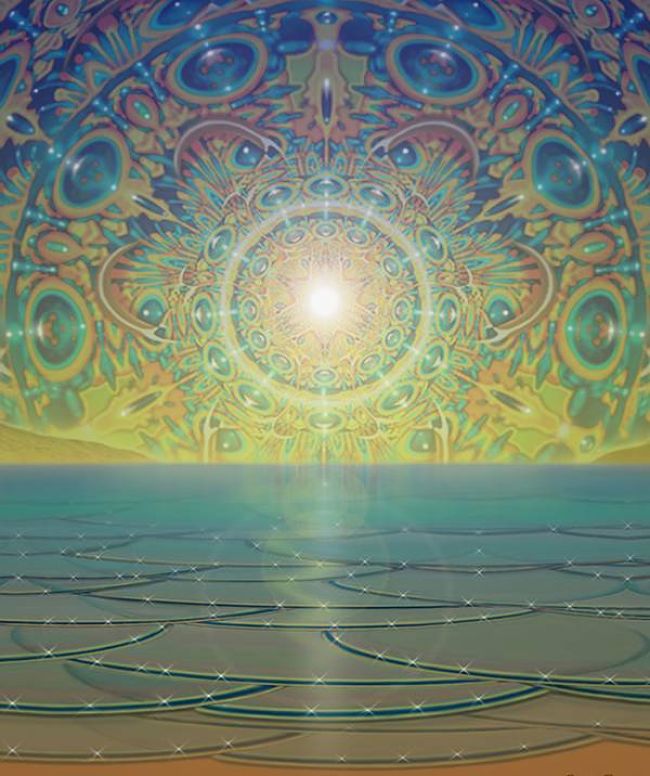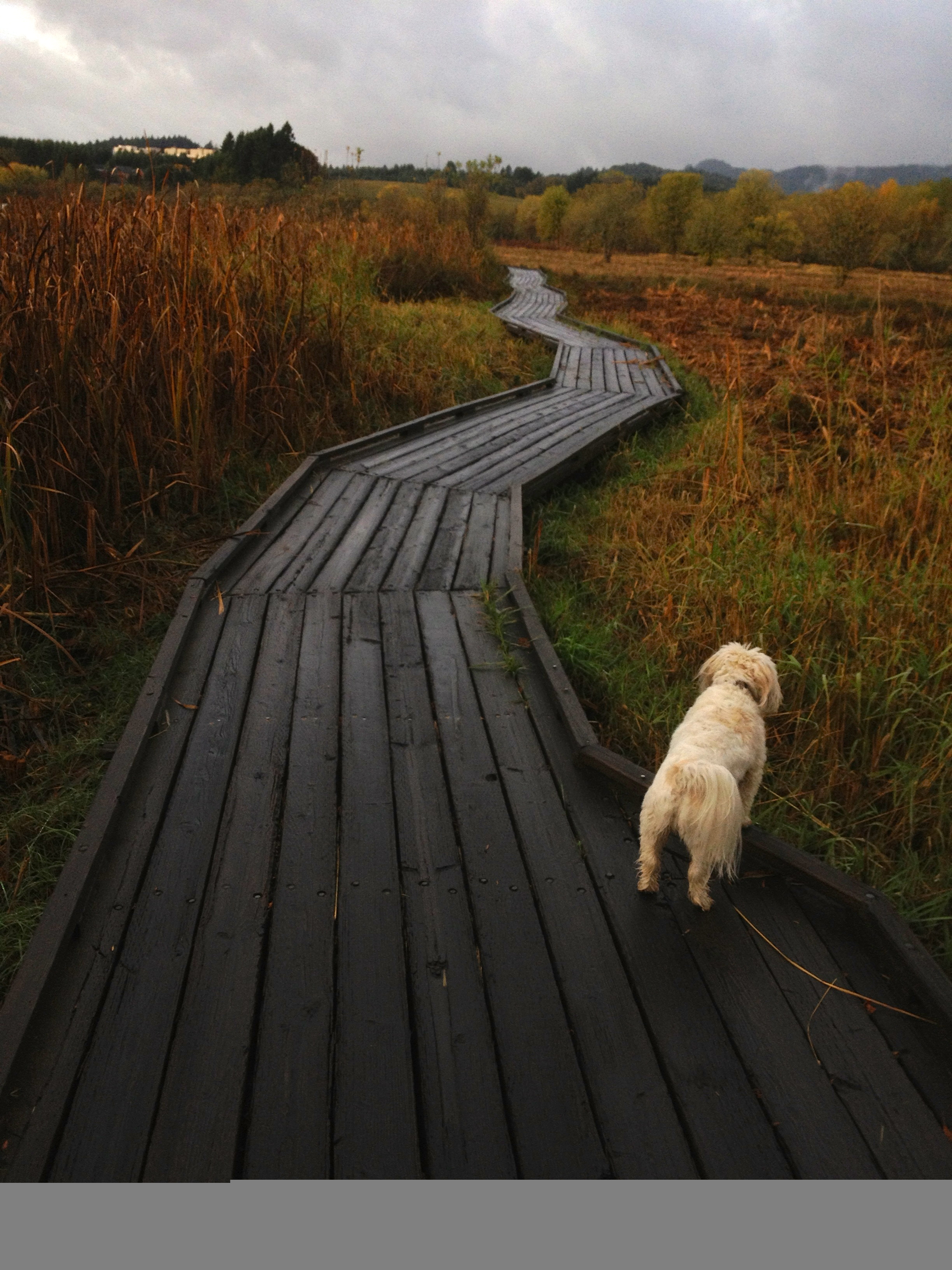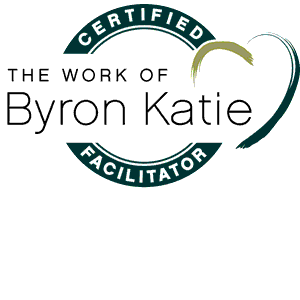Does Weathering a Quarantine Make me a Better Person?
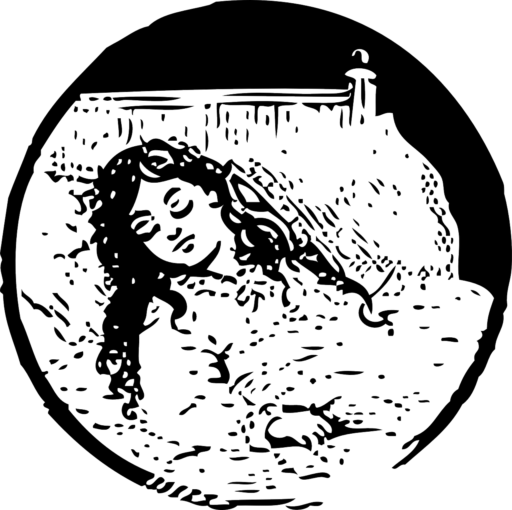
When I was seven years old, I was quarantined with Scarlet Fever. Given a room to myself outside of the family fray, with only a radio for comfort and food delivered to my room, it wasn’t half bad. After all, I was getting lots of TLC with none of the responsibility that this usually entailed. I was a voracious reader who wasn’t allowed to use her eyes. My little room had a radio whose only station brought the news and country/gospel music so important to my small southern Missouri town.
I discovered boredom. Then I started noticing something I called my “big self,” which seemed huge, able to see me while I was me, both in me and outside of myself. I thought of it as God or maybe angels. I floated out there for a while, and then I landed back in my little girl self. I have a vivid memory of looking at my legs and discovering they were skinnier. I had boney knees just like the cool girls in second grade. I was coming out of quarantine a better person.
I want that to be true this time, although I could care less about the bones in my bionic knees, as long as they take me on the walks in fresh air so necessary right now. But I want to see my life from more than a social distance. I want to be able to recognize the hidden gifts, despite all the anxiety and fear. I want to remain deeply curious and open to the world of suffering without being overwhelmed. I want to show up in all my authenticity from my “big self” as I try to wrap my head around this almost global quarantine.
As my heart breaks for the losses of so many humans I’ll never know and the more immediate ones close to me, it breaks open too. Last week I finally dissolved into sobs when I learned that a dear friend was hospitalized by the Novel Coronavirus Sledgehammer. After the sadness was the physical relief of tears, and I remembered what I’ve always known: tears are a lubricant that allows the heart to expand. Many times a day I send prayers winging to all those whose losses I hear about daily. I cry or rage at the unfairness. Then I cover my face with a mask. I write a check to the food bank. I connect with friends far and near. I set up some Zoom calls. And now I sit down to write to you. Having surrendered to the feelings, I can see little things I can do from my own little place in the Universe. I’m able to act.
I don’t know if this makes me a better person, but I do know that growing my heart so it’s big enough to hold the whole mess and take small actions makes me happier. I’ve discovered so many things from this distance-beyond-social distance during the last month, but one thing stands out. I want to stay in touch with my human tribe during these times. And that would be you.
I’m simplifying my mailings to merge my blog posts and newsletters. I plan to post short reflections, called “Water from the Well,” once or twice a month. At least once a season (around each solstice or equinox), these will be longer and will be embedded with a curated list of all the amazing resources my inner librarian keeps collecting. As always, if this no longer serves you, please unsubscribe. Your inner freedom is important to me.
All love, from the Distance-Beyond-Social Distance,
Susan Grace
The Courage to Look Under the Hood

I’m not a mechanic, although I experimented with it once, when I was 23. My husband and I owned (and lived in) the required VW van that summer. A funky hippie book called How to Keep Your Volkswagen Alive became our bible. I decided to try my hand at tuning up our VW bus, thinking this would prove my commitment to the feminist cause. It so happens that this was just before my Midwest parents’ first trip to visit me in my newlywed life in the Oregon forest. The result of my efforts under the hood was a stalled van by the side of the road, a rental car, and a unique camping experience. This is a longer story, and a good one, but not for now.
And yet…somehow this all seems relevant today. Life in these particular times seems to engage my inner mechanic, the quick-fix problem solver. But when I rely too heavily on this approach, I always discover how very difficult it is to just remember to keep in tune from the inside out, to take the time to check in with myself before taking the next action. This is especially true when the outer world presents so very many invitations to solve problems in advance (think COVID 19). A big part of my identity rests on coming up with solutions, something that often provides huge immediate pay-off. It’s also an ancient habitual loop for me, stemming from a belief I’ve had since I was about two years old. Life Rule #1: I’ll be okay once everyone around me is okay. But the long arcing spiral of reality has taught me that there’s always another problem right around the corner to solve, either for them or for me. And it’s never over.
Lately I’ve been supporting and maintaining relationships with loved ones who have given me lots of chances to focus on their needs, their fears, their problems. Glad to help, except for one thing. If I do this for too long, it gets more and more difficult to find my way back to myself. My habitual landing place in my journal is preempted by lists and responsibilities. Meditation gets trickier as the mind just keeps answering each thought with solutions. Top off this tendency with a generous helping of worry about global or political news, and it seems hopeless.
Pretty soon I don’t even want to open the engine compartment to look under the hood. Who cares about my authentic thoughts or feelings, anyway? I think. All you need to do is (Fill in the blank: Use hand sanitizer. meditate more, eat less, find a new diet, eliminate dairy, get more cardio every day.) There’s a strange pay-off to this because sometimes I’d simply rather live in denial or avoidance. Also (and this is important), sometimes I just don’t want to feel things, so being an Instant Helper is a useful dodge.
But even more important, there’s that big part of me that wants to protect herself and keep things exactly like they are. The one who fears the changes that might come from truly listening to my inner guru. So instead of applying a flexible mind and the curiosity to see what I might do differently in my life, instead of showing up for me, I perseverate about all the sources of worry around me. I overdo my preparations for all the scary possibilities, and I lose myself in fear. When I do this, I also lose my effectiveness as someone who hasn’t abandoned herself to the fears so rampant in the so-called Real World. I’m no longer that person I want to be, the one who can hold the bigger context in the midst of all the flights that imagination offers.
When I’ve abandoned my inner life to the ongoing needs that the outward world seems to demand, I’m simply not functioning on all cylinders. As hard as I crank on the ignition, it just doesn’t seem to start. So I leave myself behind by the side of the road while I take the sleek new rental car, filled with others’ thoughts and feelings and advice, for yet another spin. The funny thing is that, when I do slow down and give attention to that still small voice, there it is. Humming away, as it has been all along, that pure neglected inner guide who has been drowned out by all the demanding voices, inside and out.
This thing is worth not forgetting: the hardest shift of all is to even remember to slow down and calm down enough to listen to my inner wisdom. When I do, I remember that, yes, it takes courage to peek inside and look at what’s really going on. At first it often feels awkward because that timid inner being is deeply distrustful, for good reason. But once I remember this, I’m better capable of making that 180-degree shift. I have the courage to overcome the influence of others’ fear loops and look under the hood. I say a prayer, meditate, take a long walk in nature. And there she is, patiently waiting while I’ve given my heart and attention to all the so-called problems around me. I open my journal or find my laptop, and I listen. And listen. And listen. The gas line clears, the tuning light comes on, I begin to question assumptions that no longer work. Clarity appears, gradually.
The inner tuning light flickers on and then holds. All because I found the courage to open that engine compartment, to take the risk to find my way back home.
Mermaid Life / Walrus Life
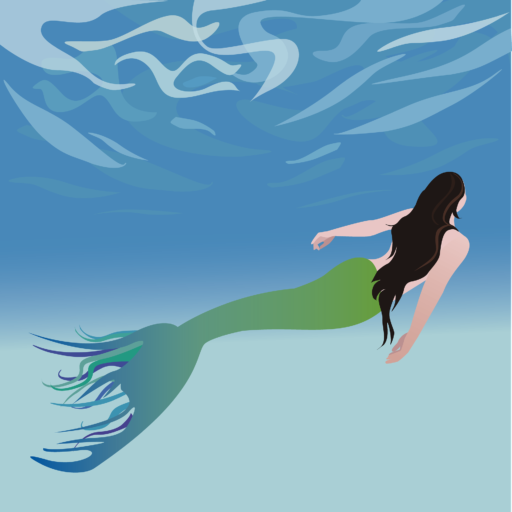
Always Be Yourself, Unless You Can Be a Mermaid.
Then Always Be a Mermaid.
Every morning these words, carved on a plaque directly across from my meditation space, greet me. I’m in my Ocean room, a space dedicated to my Orisha, Yemaya. Some explanation: In 2003, I visited Cuba to learn about Afro-Cuban folklore and music. While there, I discovered Orishas, archetypal guardian spirits who guide your life, according to the Santeria faith. Curious about who my archetypal fairy godmother might be, I requested a formal divination. I met with three Babalaos (or priests), who chanted and tossed black and white stones on the floor. After some discussion, their conclusion was unanimous: Yemaya, the ocean. My Orisha.
Returning home and sponge-painting a room blue to create an underwater cove, I remembered the Santeria priests’ warning. Yemaya must have an anchor. In the mythology, her other half is Okulun, who lives in the deepest part of the ocean. Unseen, he anchors her so the waves don’t tip her over. Since then, every time I go near the ocean I take a small blue jar of water with a tiny anchor inside. In a tiny private ritual, I fill it with ocean water and take it home to place on my altar.
Also in my meditation space is an altar with objects that serve as totems, or wayfinding symbols to take me back to my essential self. When I light a candle, I see the blue bottle and I’m reminded to be anchored in the mystery of that which cannot be seen. I often see meditation as a time to dip into a watery, less linear state of mind. It helps me remember a different self than the one who navigates the daylight world and reacts to the challenges served up by everyday land-bound reality.
In that dreamy underworld space, I can swim with purposeful abandon, gracefully flip my mermaid tail and dive to clean underwater castles and shipwrecks. My inner life as a mermaid is pristine, uncluttered with daily compromises and responsibilities. I treasure this mermaid world. It’s a place where I can commune with the ineffable essence of the deep unknown and still stay anchored to my inner world with equanimity. But then there are the twists and turns that real life brings up. The troubling feelings and thoughts that keep coming back for examination, requiring a look at less charming aspects of my inner life.
That’s where the walrus 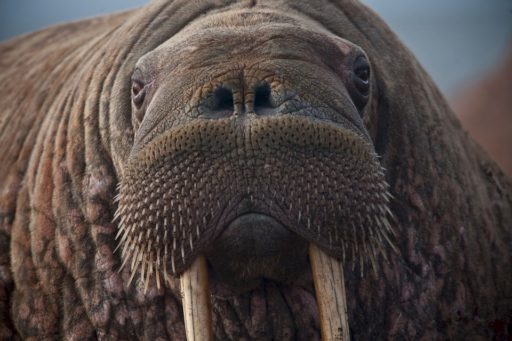 comes in. Long ago in Anchorage, I spent hours in a tourist shop seeking a totem, a “power animal” to call my name. My eyes kept coming back to a tiny walrus, carved from ivory tusk. This attraction definitely wasn’t what I’d planned. I had in mind something sleek (say, a wolf) or something sturdy (like a bear or a moose, even). Definitely not a large, blubbery animal who’s mostly stationary.
comes in. Long ago in Anchorage, I spent hours in a tourist shop seeking a totem, a “power animal” to call my name. My eyes kept coming back to a tiny walrus, carved from ivory tusk. This attraction definitely wasn’t what I’d planned. I had in mind something sleek (say, a wolf) or something sturdy (like a bear or a moose, even). Definitely not a large, blubbery animal who’s mostly stationary.
But there she was, refusing to let go of my imagination. I bought the tiny icon and brought it home. Then I did a little pre-Google research on walruses. They feed in the mud and muck, excavating for their food by using their extremely sensitive whiskers, “mustacial vibrissae,” as detection devices. I can relate to that, I thought as I placed my tiny totem on a small craggy rock on my altar. And there she has perched for thirty years. A reminder of the nutrition to be gained from the darker challenges that life offers. Over time I have been reminded that what is pretty or acceptable or even graceful or fun may not take me to my deepest truth. My walrus amulet reminds me to be brave and to learn to have compassion for less attractive or appealing parts of myself.
She serves as a reminder that, as much as I love the pretty mermaid dive, sometimes her song may be a distraction fueled by denial. Over time I’ve learned to trust something I think of as the walrus dive. I’ve learned to value shadow work, which has taken me into (and through) the troubling, ugly, unacceptable things in the world and in myself. Through extensive inquiry, I’ve discovered that even the pettiest or most troubling thoughts and feelings deserve respect. The walrus world may not be as pretty or pristine as my imaginary mermaid world. But when I dive into the muck and messiness of my thinking, I often discover the innocence of even the darkest recesses of the psyche, I return feeling truly anchored in the truth and kindness of the deepest mystery.
The Tastiness of Reality
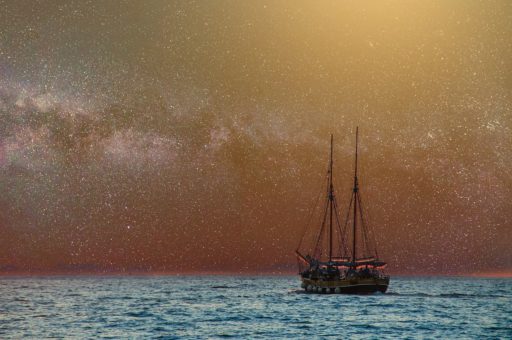
I’ve been carried into the new decade on the tail end of a flu comet, one that wiped out the last couple weeks of the old year. Just before that, Ram Dass, a spiritual guide to me and thousands of others, took flight. As I begin 2020 and think about his brilliance at summing up the life of the soul, I’m remembering his reminder to me, words I have carried for years: You aren’t a pumpkin. You aren’t a mother. You are a soul.
As I resurfaced from Influenzaland, in time for the New Years, I was reminded of other wise words of Ram Dass: Our plans never turn out as tasty as reality. I’ve been sitting with that as I think about what my Planning Self might list as goals (or even intentions) for the coming year. But this Planning Self still had the brain fog of flu.
Luckily for me, years ago I realized New Year’s Resolutions haven’t worked out because in truth most anything good in my life has come from inside out. And so I set aside Epiphany, on Jan. 6th for reflection, celebrating my own personal holiday. And so this year, once again I remembered what I’ve always known. Change comes for me at its own speed. From a slight pause and a step to the side. Often the new way comes as natural as breathing, from inspiration to exhalation, a bridge between the old world and the new. Now that I can breathe, now that the flu is gone, I can trust all of it and measure my intentions, mixed with reality. May you find your own breath, your own voice, your own way, remembering the tastiness of reality, even sweeter than your planning self might believe.

